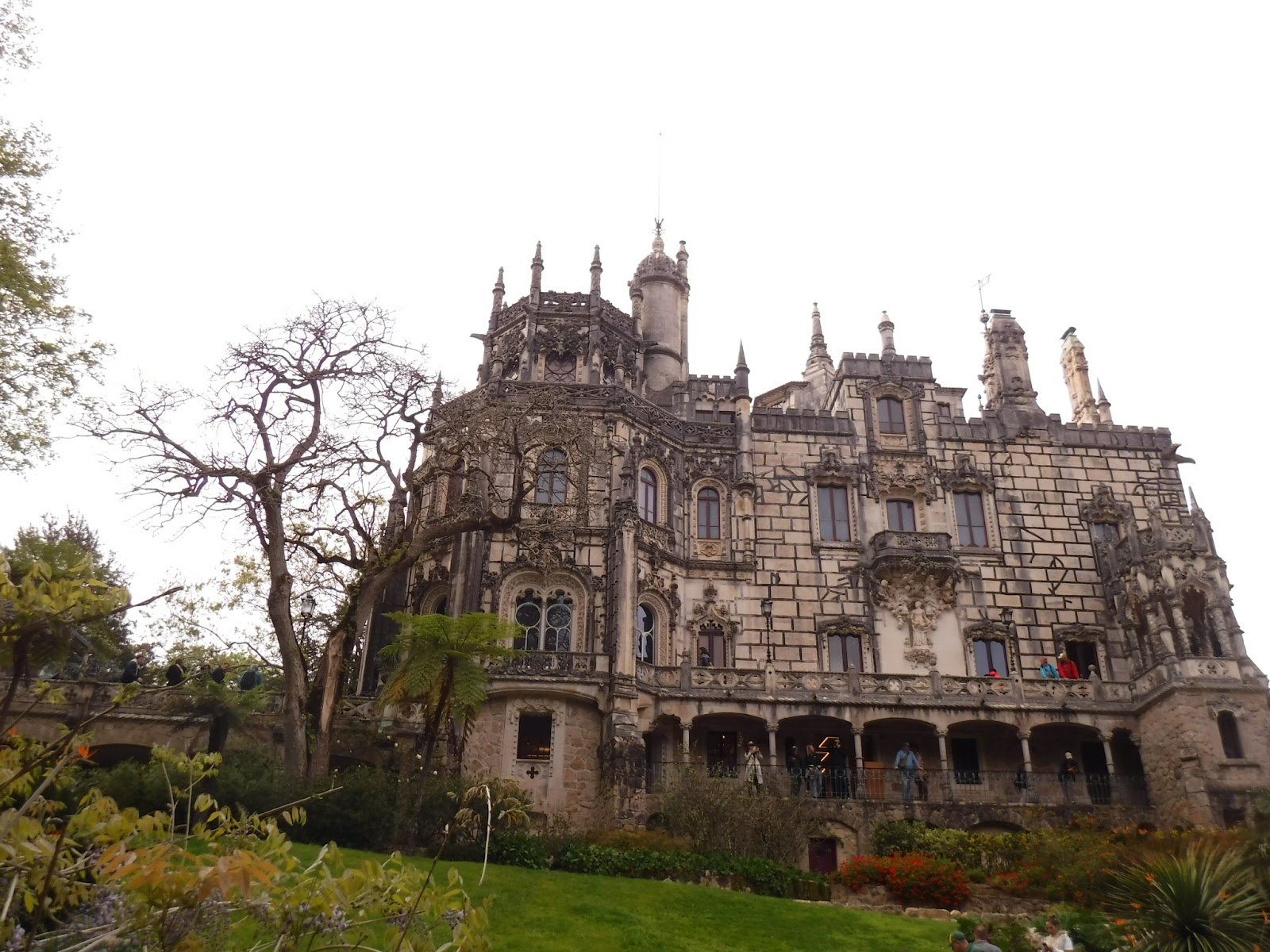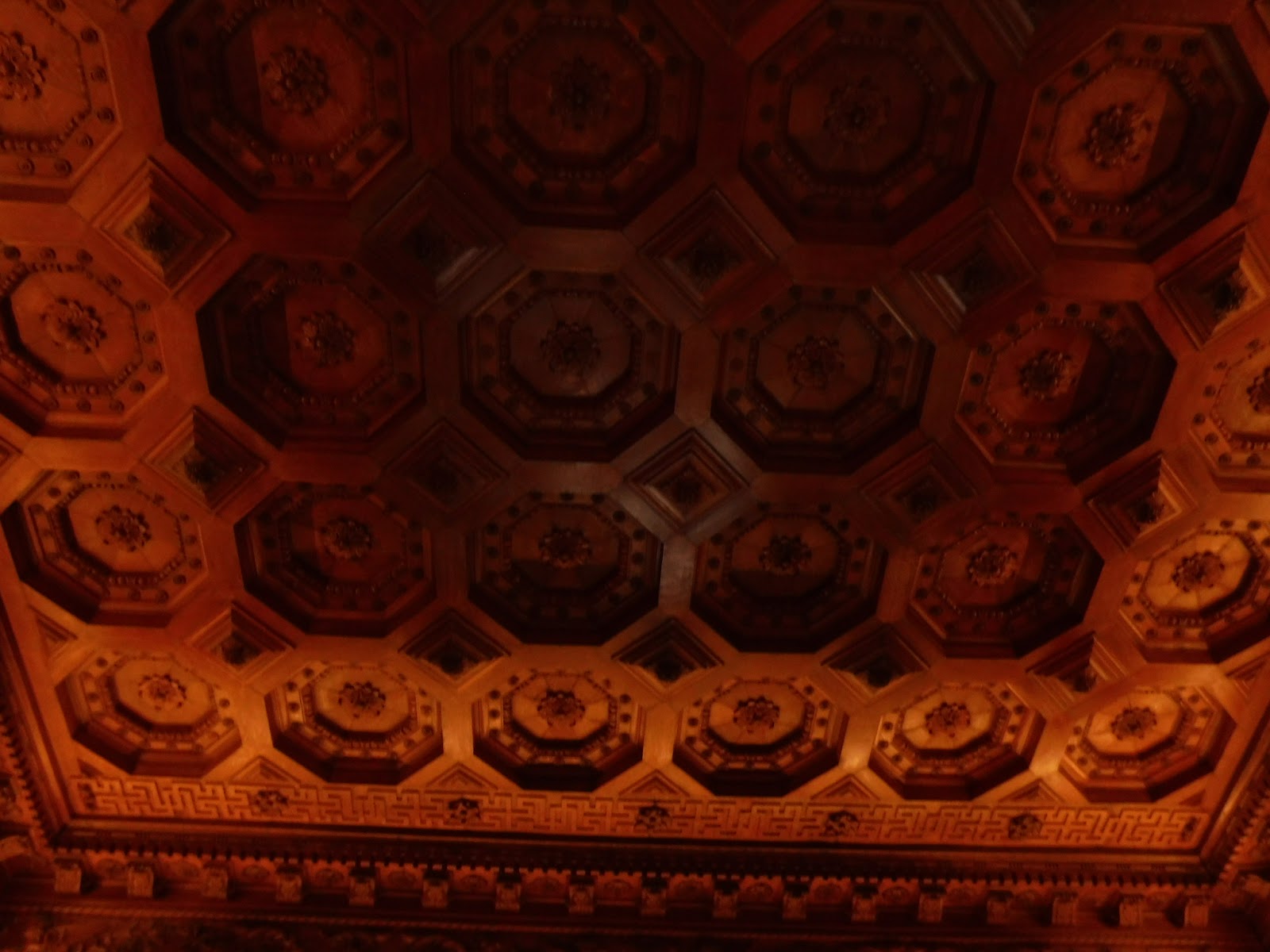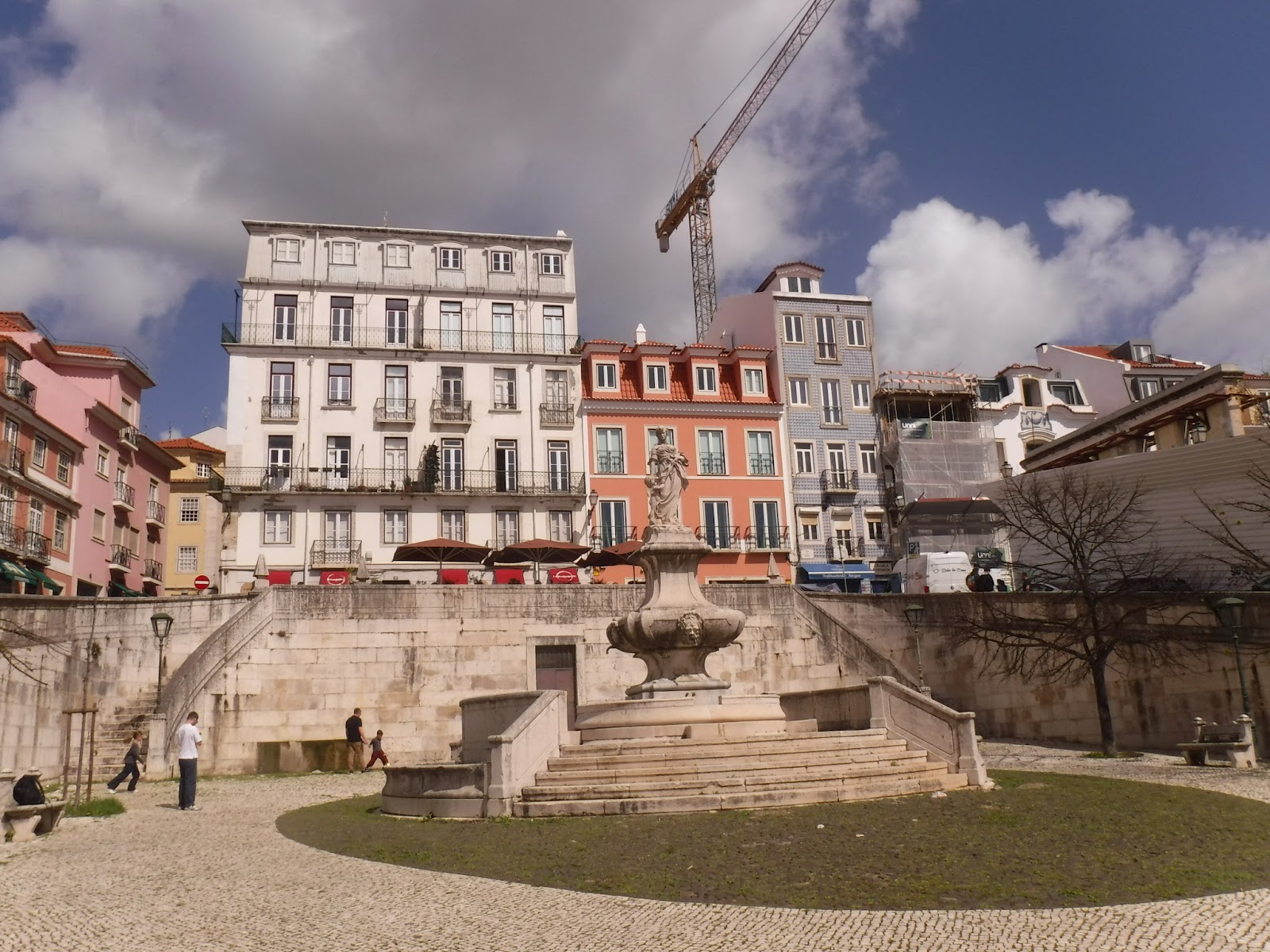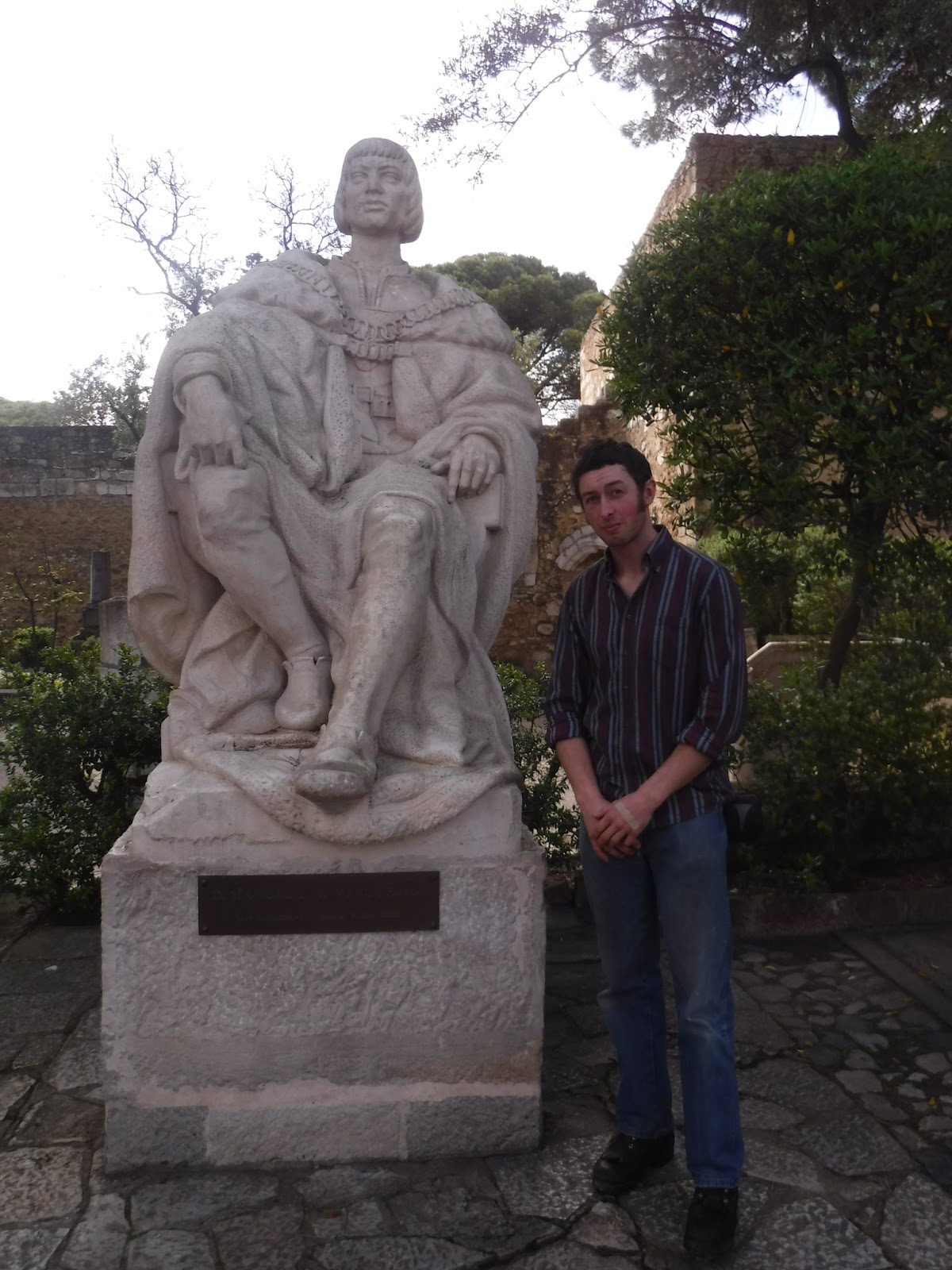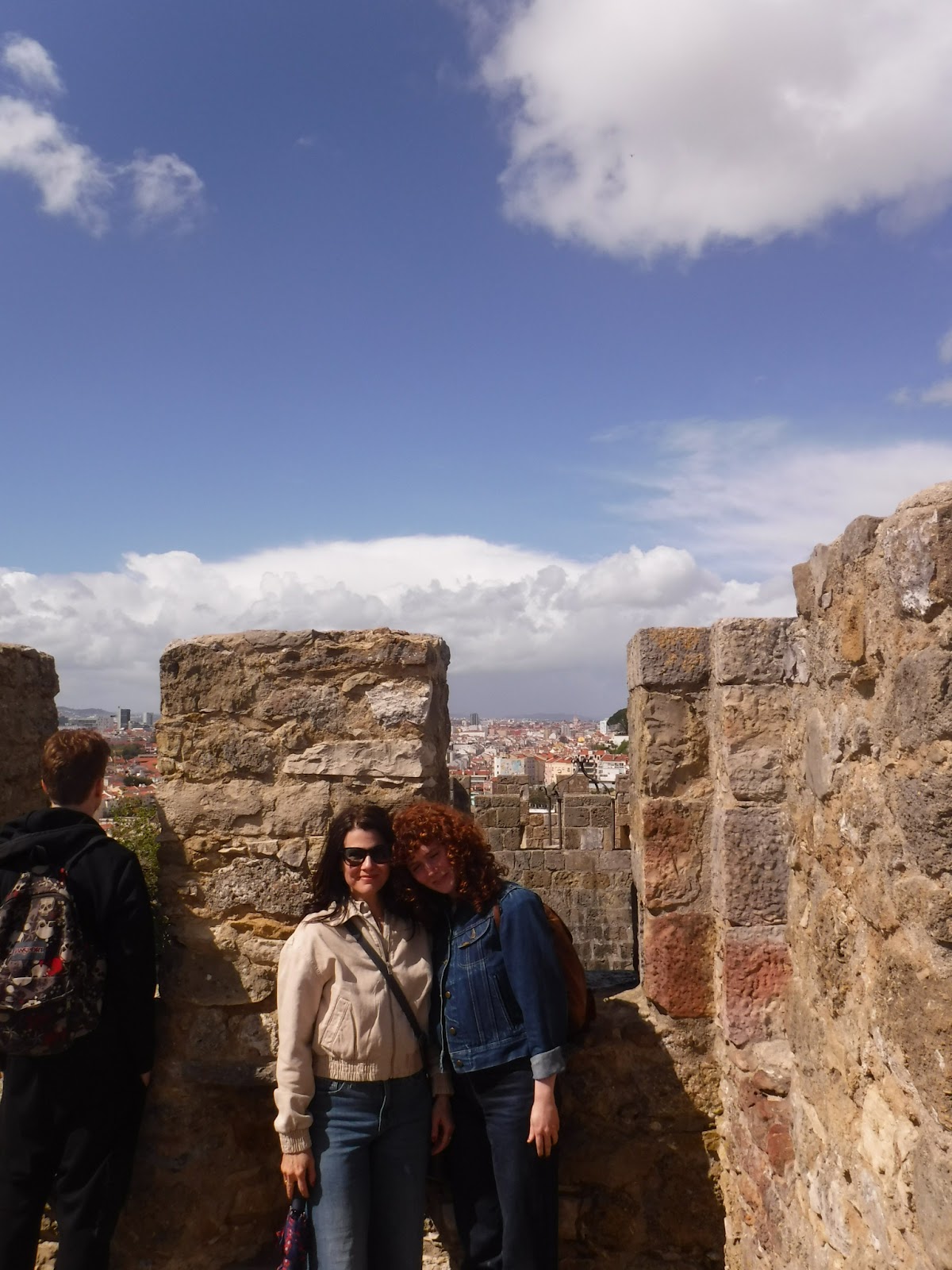Another gloomy day, but not one without excitement - we packed up in Lisbon this morning and headed 45 minutes inland towards the lush small town of Sintra. Cloaked in rainforest greenery and boasting 16th century manueline architecture, its streets are enchanted for both the small local population and the large volume of tourists. We would be staying for two nights in this cute villa with unfortunate modern decor, but satisfyingly exposed timber framing and a scenic patio.
As soon as we could, we hopped on a bus for them main event of the day: La Quinta de Regueral; A 19th century palace and guest house with famous stonemasonry and gardens. But to our jetlagged frustration, our supposed 25 minute bus ride quickly became an hour and 15 transit due to congestion from other tourists, it being Saturday. The time off our feet however was not too disappointing for us and Linda. We sat in the busy multilingual bus and we rested. The orchestration and funding of the property was done by Antonio Monteiro, a wealthy Portuguese coffee businessman and entomologist, very passionate about natural things and architecture and as such, these gardens show exquisite biological diversity among its excavated pools, tunnel systems and towers. Weathered and weedy stone pathways are used to navigate through the overgrow greenery. Any given trail can offer a subtle
tower opening off to the side whose tight circular staircase takes you to the garden tier above, or maybe the head of another unassuming trail into the brush or to a quiet turbid pond or maybe even when rounding a corner you find the rock wall beside you has been excavated and enshrined... all and more is possible here.
Along the way we passed elegant and fragrant flowers, beautiful sycamore maples, Cypress species excitingly reminiscent to western cedars (Lawsons Cyprus, Mexican Cyprus) and huge cook pine trees. We woven and we wandered through the gardens before making it to the "infinity pool," a popular attraction on the property that had a lineup to view. The wait passed quickly speaking to an older family in front of us who timidly admitted they were from Idaho. Very nice people who we tried to reassure that Canada does not resent you particularly, it is just that we resent him and all those in his courts.
Reaching the pool we found it to hold no water bu rather to be a deep cobblestone pit with a staircase revolving along its exterior. The interior of the pit reminded me of the one Christian Bale had to climb out of in the Dark Knight Rises. On quick inspection of the interior walls of the pit I figured that in a 'Gulag; situation I too would be able to climb out of the pit using the stone openings as hand and feet holds. After taking the staircase down to the pit's bottom we used an impressive cave system that took us behind a small waterfall and eventually spit us out at a spot in the lower tiers of the gardens. Beginning to feel restless we strolled down towards what I had grown most excited for: the manor. Built in the 19th century, this white and dark grey palace is a jewel of neo-manueline stonemasonry and architecture. Its spires and cones pierce through the sky and exaggerate its almost mountainous appearance. Past the lazy kitty baking in the sun, the undisputed ruler of its own world, we enter the great doors and marvel at hand-carved ceilings and elegant rococo furniture. From room to hall to room to balcony we marvelled at great displays of design and craftsmanship.
Aside: why am I writing this little journal? Well, primarily to have something to return to time after time to be reminded of Portugal. Which then begs the question: what do I want to remember? The exact sequence of events one before the next and then the next after that and then the last, all while introducing personnel, setting, logical basis of being there, etc.? Yes, I want to remember this, but moreso I want to return to the feelings, the smells, the wonder of being in a new place. From now on, I’ll try to dismiss all chronologicity in favour of sensory description. *if my pen allows me
 |
| Sintra |






